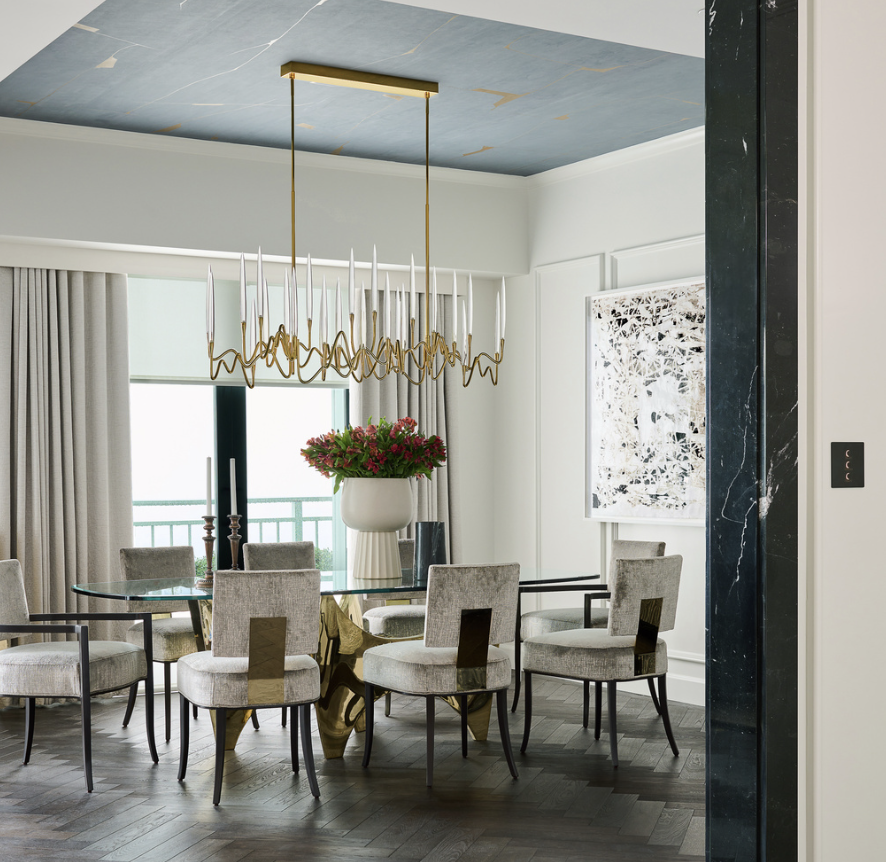The Order of Operations: What Comes First in a Remodel

Every successful renovation follows a rhythm — an order of operations that’s not just tradition, but essential. Skip ahead or rearrange it, and you’ll end up paying for it later (literally). Design magazines tend to show the polished “after,” but behind every seamless kitchen or bathroom is a sequence that’s been timed and coordinated to the day.
Below is the real progression of a high-end residential remodel, whether you’re opening up a Los Angeles kitchen, gutting a bathroom, or taking on a full-home transformation.
Demolition
Demolition marks the first real day of change, the moment the old makes way for the new. It’s messy, loud, and honestly, a little exhilarating. There’s something gratifying about stripping back the layers to reveal the bones of a house. But it’s also the stage where surprises tend to show up. Hidden leaks, old wiring, termite damage — these things only reveal themselves once the walls come down.
For homes that are occupied during the remodel, dust control becomes an art form. Ram board, zipper doors, HEPA filters; it’s all part of keeping chaos contained. For unoccupied homes, it’s about speed and precision: clearing everything safely so the new work can begin on a clean slate.
Framing and Structural Work
Once the space is gutted, framing begins. This is when the new vision starts to take shape. Walls are adjusted, openings are framed, and niches or built-ins are carved out. It’s also when reality checks happen. Maybe the perfect shower layout needs a little tweak once the framing is in. Maybe that new kitchen island needs another inch of clearance. It’s all about translating the plan from paper to structure.
Rough Plumbing and Electrical
This phase is the backbone of your home. It's what makes everything work. The plumbing team installs rough-in valves and runs water and drain lines to their exact locations. At the same time, electricians determine where every switch, outlet, and light fixture belongs.
This is where coordination matters. A misplaced outlet or incorrect valve height can throw off everything down the line, especially when finishes like tile or cabinetry are measured to the millimeter. The goal is precision now so you don’t have to make compromises later.
Waterproofing (Bathrooms and Wet Areas)
In bathrooms, this step is critical and too often underestimated. Proper waterproofing means longevity. It’s not glamorous, but it’s what separates a beautiful bathroom that lasts twenty years from one that starts leaking in two. Think membranes, sealants, slope control, all invisible, but vital.
Drywall and Surface Prep
Once the rough work passes inspection, drywall goes up. Suddenly, it starts to feel like a home again. This is also when any uneven walls are addressed — because even the most beautiful marble slab or paneling won’t hide poor prep.
Flooring Installation
Now the visible layers begin. Hardwood, stone, or tile flooring sets the tone for the whole project. It dictates color palette, proportion, and mood. This is where patience pays off. Proper leveling and layout make a world of difference. For herringbone or inset patterns, installers spend hours just mapping before setting a single plank.
Cabinetry and Millwork
Cabinetry installation is often misunderstood. When the cabinets go in, clients assume the finish line is near. It’s actually the halfway mark. Custom millwork requires time and accuracy. Every reveal, corner, and edge alignment matters. It’s the part of the process where craftsmanship truly shows, and when the design starts to look intentional rather than conceptual.
Countertops and Stonework
Once the cabinetry is in place, stone fabricators come to template for countertops. This is an exacting process; measurements are taken down to the eighth of an inch. From there, slabs are cut, polished, and installed. Depending on the material, fabrication can take several weeks.
This is also the point where homeowners begin to see their vision come alive. That Taj Mahal quartzite or Calacatta marble finally arrives, transforming the space from framework to art form.
Tile and Slab Installation
Tile installation is as technical as it is creative. For natural stone, every piece is dry-laid first to balance veining and tone. Installers spend hours playing with the pattern to ensure visual flow. A well-executed tile layout is like composition, subtle but powerful.
Painting and Wall Finishes
Painting happens once the major trades are out. This is when the personality of the space starts to emerge. Whether it’s limewash, Venetian plaster, or just a clean matte paint, the goal is to perfect the surfaces so that every finish looks intentional. Walls are skimmed, sanded, and sealed. Sometimes this stage overlaps with others, but timing is key to avoid damaging fresh paint or finish work.
Wallpaper
Wallpaper is one of those details that makes a room feel finished. Every seam must align, every pattern centered. Whether it’s grasscloth or silk, it requires controlled humidity, clean surfaces, and a great eye.
Finish Electrical and Plumbing
The polish phase. Fixtures, sconces, outlets, and faucets finally go in. The rooms start to function again. This is when the sparkle returns; the lights turn on, the water runs, and the space feels alive.
Furniture and Installation
The last and best step! White-glove delivery, art hung, window treatments installed. It’s when all the chaos fades and the calm returns. Even if you’ve been living through the process, this day always feels new. It’s the moment everything comes together; the tangible payoff for months (sometimes years) of planning.
Final Thoughts
A remodel isn’t just a series of tasks, it’s choreography. Each step depends on the precision of the one before it. The order isn’t negotiable; it’s what protects the integrity of the design. Whether you’re renovating a powder bath or building a full-scale estate, respecting the process is what separates rushed work from lasting design.
